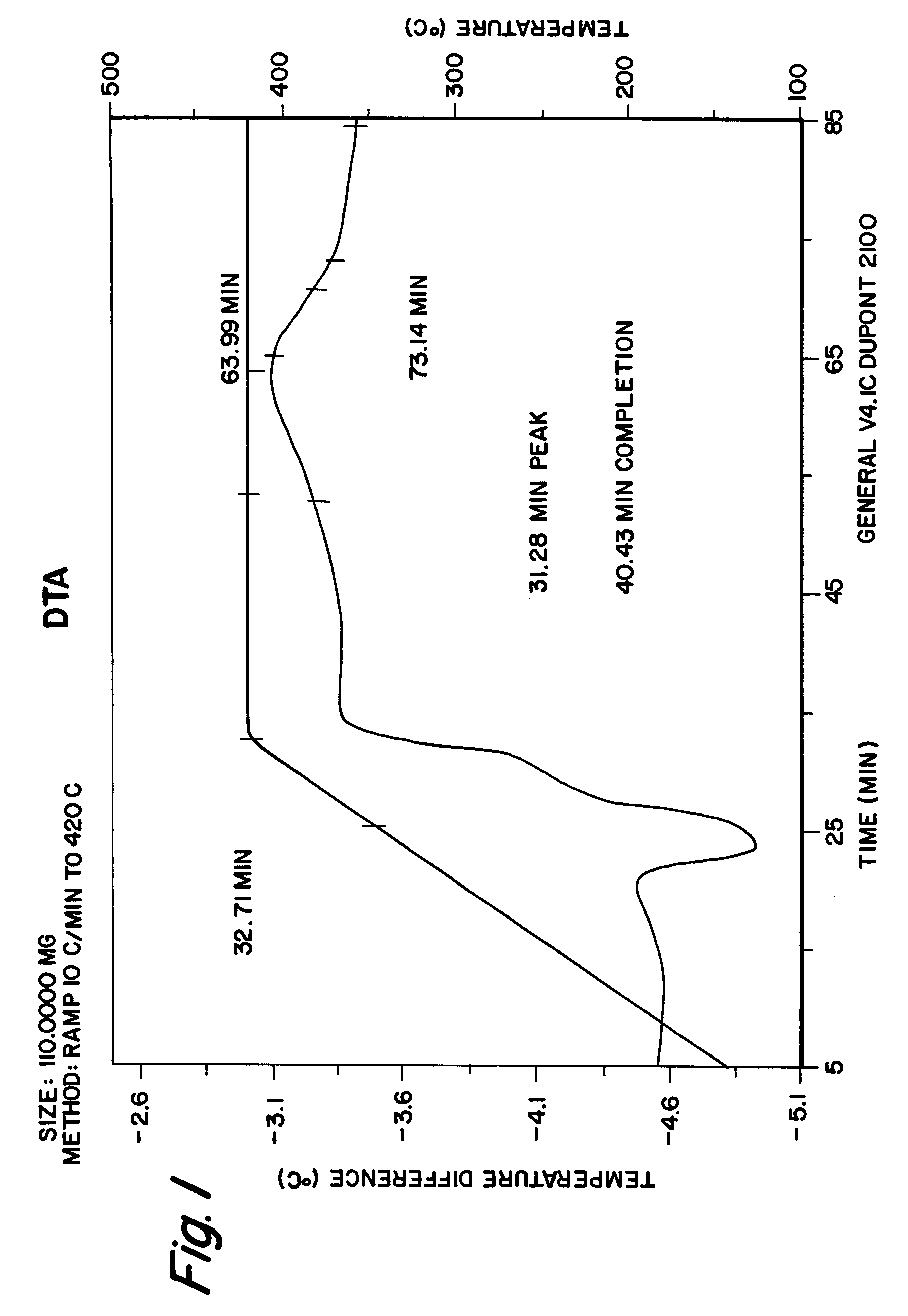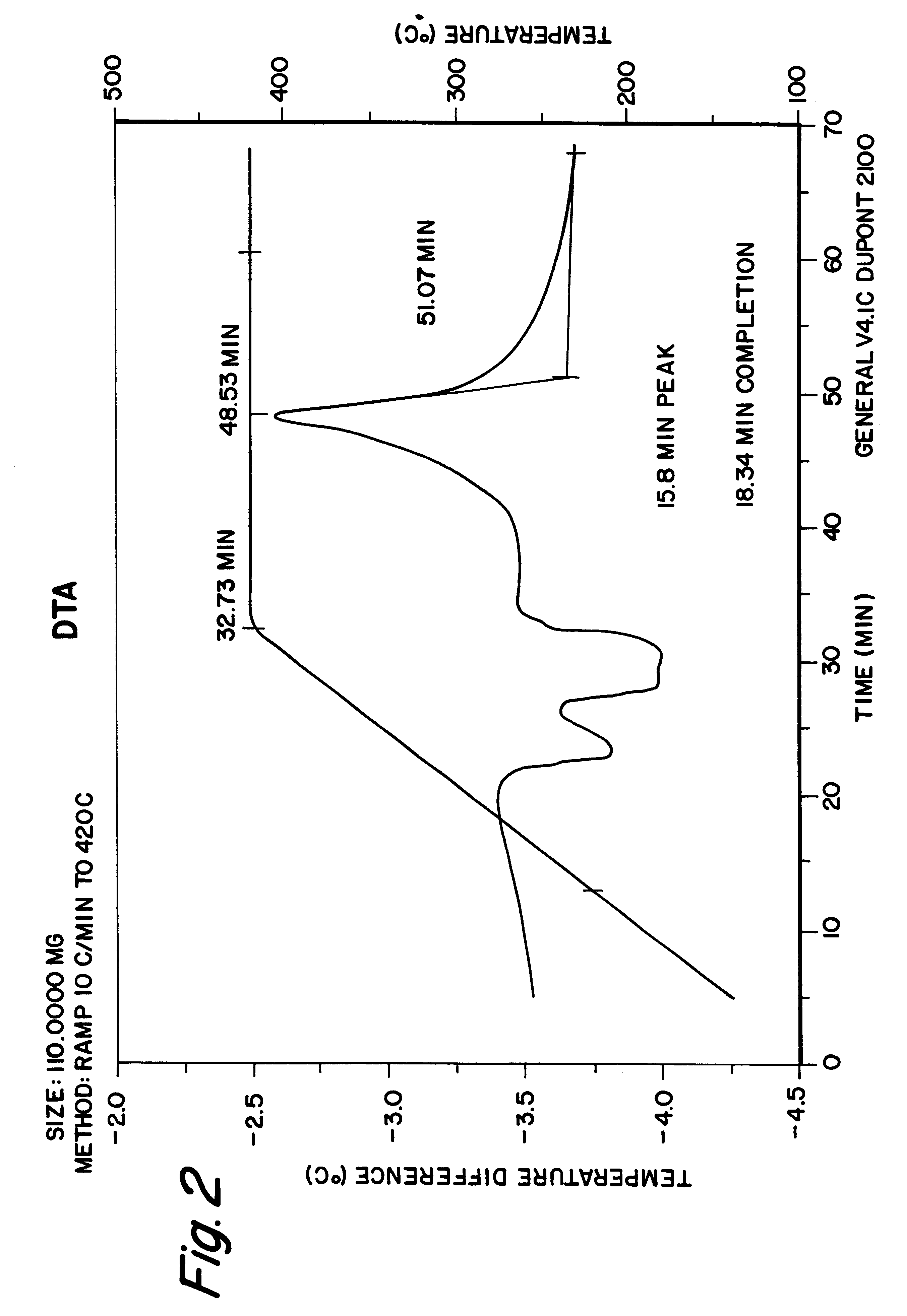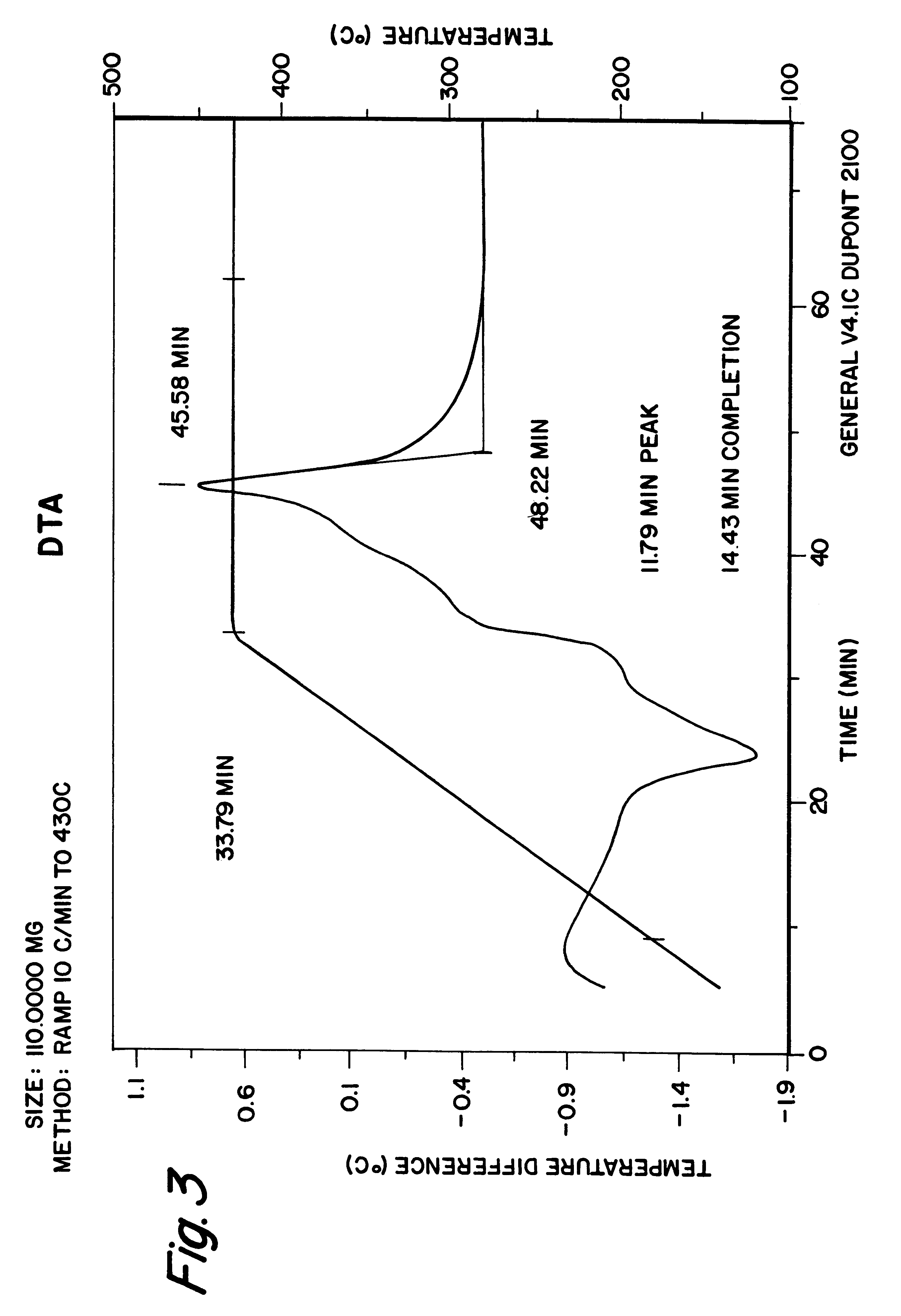Low temperature sealing glass
a technology of low temperature sealing and glass, applied in the field of low temperature sealing glass, can solve the problems of not being recommended, severely limiting the potential production in a processing facility having a fixed capacity, and not having satisfactory sealing properties, and achieve excellent devitrification seals
- Summary
- Abstract
- Description
- Claims
- Application Information
AI Technical Summary
Benefits of technology
Problems solved by technology
Method used
Image
Examples
example 2
A sealing glass was prepared by thoroughly mixing a powdered crystallizable glass having a PbO / ZnO / B.sub.2 O.sub.3 / SiO.sub.2 composition in its vitreous state with 0.3 wt. % zinc zirconium silicate (based on the weight of the glass) having an average particle of about 5 microns and about 0.3 wt. % granular zirconium silicate having an average particle size of 20 to 30 microns.
As described above, delayed but fast crystallization is desired in sealing glasses used for sealing television picture tubes. The early crystallization stages of this sealing glass was examined after heating some of the powdered sealing glass to about 420.degree. C. and some of the glass to about 430.degree. C. These samples were compared to conventional sealing glasses. The sealing glass of the present invention--processed at either temperature--showed some large crystals and more glassy areas than samples of conventional sealing glasses under the same processing conditions. The volume of each of the large cr...
PUM
| Property | Measurement | Unit |
|---|---|---|
| hold temperature | aaaaa | aaaaa |
| particle size | aaaaa | aaaaa |
| sealing temperature | aaaaa | aaaaa |
Abstract
Description
Claims
Application Information
 Login to View More
Login to View More - R&D
- Intellectual Property
- Life Sciences
- Materials
- Tech Scout
- Unparalleled Data Quality
- Higher Quality Content
- 60% Fewer Hallucinations
Browse by: Latest US Patents, China's latest patents, Technical Efficacy Thesaurus, Application Domain, Technology Topic, Popular Technical Reports.
© 2025 PatSnap. All rights reserved.Legal|Privacy policy|Modern Slavery Act Transparency Statement|Sitemap|About US| Contact US: help@patsnap.com



